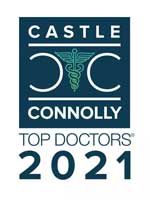

As we age, our vertebral discs, which serve as shock absorbers for the spine, gradually dry out, affecting their strength and resiliency. This can lead to degenerative disc disease (DDD). DDD of the cervical spine is a relatively common condition for aging adults. However, many people who have cervical degenerative disc disease don’t even know it. They may only become aware of the condition when being examined for another health problem or during a routine checkup. In fact, asymptomatic disc disease is typically not a problem. The simple existence of anomalous x-ray results does not mean treatment may be required.

Symptoms
Disc degeneration is a normal part of aging, and is not usually a problem. However, DDD can cause the discs to lose height and to become stiff. When disc height is lost, nerve impingement, bone and joint inflammation, and resultant pain can occur. Disc degeneration causes loss of the joint space, similar to arthritis pain and inflammation. In severe cases, this pain may be constant.

Diagnosis
All effective treatments are built upon accurate diagnosis. Your physician will use a combination of their expertise and state-of-the-art diagnostic technology to ensure a correct diagnosis. The diagnostic process includes:

Non-Operative Treatment
For acute or sudden neck pain, doctors prescribe pain relief medications such as acetaminophen, anti-inflammatory agents, and muscle relaxants. Temporary bed rest or a brace may also be suggested. Usually patients are encouraged to get up and gradually increase their activities of daily living.
Physical therapy is often prescribed, and usually includes stretching exercises to improve flexibility and extension exercises to help maintain the spine’s natural curve. A hot/cold therapy and gentle massage can also be beneficial for neck pain. Chiropractic care may also be considered at this time.
After acute symptoms subside (usually within two to three weeks), patients are encouraged to begin a daily exercise regimen. This may include low impact aerobics three times per week as well as daily neck exercises.
Surgical Treatment
If symptoms of cervical DDD persist despite these non-operative treatments, further diagnostic tests may be necessary. These tests may include an MRI, CT Scan, Myelogram, or possibly Discography. If the surgeon discovers that one or more of the vertebral discs have herniated, surgery may be necessary. Your surgeon will consider various surgical options. A common technique is an anterior cervical discectomy and fusion (ACDF). This involves an anterior (from the front) approach, removal of the offending disc and then fusion of the adjacent vertebrae usually with instrumentation. However, there are also other surgical options that will be considered, and your surgeon will carefully discuss these with you.
Recovery
While cervical DDD is a natural part of aging, it does not mean you have to live with neck pain. Doctors can help you return to a healthy and active life. For most patients this can be accomplished with non-surgical treatments. But even if surgery is needed, be assured that your doctor will discuss with you all aspects of the procedure and provide you with the best care possible.
Dr. Goldstein is recognized as one of the leading spine surgeons in New York. He is a Clinical Professore of Orthopedic Surgery and Neurosurgery at the NYU School of Medicine. His expertise is sought by television, media, and magazines. His practice is focused on surgical treatment:
 Dr. Jeffrey Goldstein was recognized again in 2021 as one of America's Top Doctors .
Dr. Jeffrey Goldstein was recognized again in 2021 as one of America's Top Doctors .
Dr. Goldstein serves as Director of Education, Division of Spine Surgery and Director of the Spine Surgery Fellowship at NYU Langone Health (previously Medical Center Hospital for Joint Diseases.)

Patients from around the world travel to New York for the most advanced medical care. New York offers unrivalled facilities, accommodation, and infrastructure.